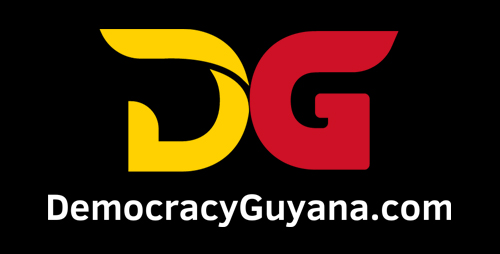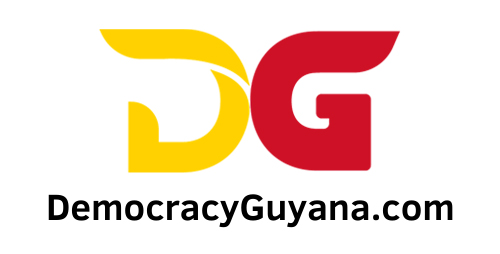- Taken together, all of Guyana’s public debt indicators are well within the low-risk range and more importantly, far below the global levels. This trajectory is expected to remain in the low-risk range over the near to medium term even if oil prices plummets to as low as US$25/barrel or US$30/barrel.
- Guyana’s total debt, which includes both public and private sector debt accounted for 35% of GDP at the end of 2023. This is 203 percentage points below the global debt-to-GDP as of 2022, which stood at 238%. The global public debt-to-GDP was 92% in 2022, whereas Guyana’s public debt-to-GDP is less than 30% of GDP, about 65 percentage points below the global level.
- The breakeven cost for oil production in Guyana’s Stabroek block is one of the lowest in the world, if not the lowest. In 2020, the breakeven cost was US$26/ barrel, which rose to US$46.6/barrel in 2021, fell to US$20.2/barrel in 2022 and increased slightly to US$21.7/barrel in 2023.
- The sensitivity analysis performed herein demonstrates that given the considerably low breakeven cost of US$22/barrel, Guyana’s Stabroek block crude oil will remain profitable to produce and develop for a long time into the future―another 30-40 years at minimum according to this author’s estimation. This will be largely due to the fact that if oil prices do collapse below US$30/barrel, almost 50% of global output will be negatively affected to the degree that for at least 68 oil producing countries, new developments and oil production will become unprofitable―given their higher levels of breakeven cost, all other things being equal.
-
Introduction
Following the budget 2025 debate in the National Assembly, a public discussion ensued on Guyana’s public debt sustainability framework. The argument was made that the debt-to-GDP ratio is not the only measurement of debt sustainability, that there are other indicators that have to be taken into account, and that with oil price volatility, the economy may not be in a position to honor its debt obligations in the future, should there be an oil market crash. This subject of debt sustainability was previously examined by this author in some detail, within the broader debt sustainability framework that encapsulates other metrics. However, this article seeks to address the subject of debt sustainability within the context of the impact of oil price volatility on the debt sustainability and macroeconomic stability framework.
-
Discussion and Analysis
Debt facilitates the creation of wealth, vis-à-vis, increasing the money supply. But debt has to be managed sustainably because there are multiple risks associated with debt. When debt is undertaken to finance consumption expenditure, this should always be contained to a minimal extent. Consumption activities do not generate future income streams. Debt financing, on the other hand, when channeled towards productive activities that would generate and expand future income streams is necessary, albeit within a sustainable framework.
As such, debt is not an isolated, absolute variable. Debt creation is typically in relationship to other variables. Primarily, debt is issued in relationship to (1) the productive capacity (potential future revenue streams) and productive output (current levels of production) of a country in the case of public debt, of a firm in the case of corporate debt, of an individual/household in the case of household debt. Debt is also relative to (2) the revenue (cash flow) derived from the productive activities, and (3) relative to the market value of total assets utilized to generate the productive output when put to work. Generally, these are the fundamentals that are of key importance to always bear in mind when conducting a debt sustainability analysis, whether it is within a household context, corporate context, or a macroeconomic context. In other words, the level of debt employed is relative to other factors such as current levels of income and productivity as well as future income earning potential, based on the investments undertaken therefor. Evidently, the economy’s productive output and productivity, income and/or wealth creation capacity have far outpaced the level of debt undertaken that have generated these macro results.
In the case of a country, the productive assets of a country include the physical resources, human resources (population), and the natural resources. The productive activities carried out by individuals, firms, and the State/Government, in turn generate national income and/or wealth for the country, its people (households) and firms.
Over the last twenty-two (22) years (2001-2023), total public debt increased threefold (from $276b to $940b). And in the same period, GDP (the economy’s productive output) increased by nearly thirtyfold; non-oil GDP (the non-oil economy’s productive output) increased ninefold; central government revenue increased twelvefold; household net income increased twelvefold; and business enterprises net income increased eighteenfold.
The total public debt indicators are well below the low-risk category in accordance with the International Monetary Fund’s (IMF) risk profile benchmarks, whereby countries with a debt-to- GDP ratio of <50% are considered low risk, 50-90% are considered moderate risk and >90% are considered high risk. With this in mind, Guyana’s public debt-to-GDP ratio was 24% in 2023, which fell by two (2) percentage points at the end of 2024 to 22%. The public debt service indicators are also well within the low-risk range, with a debt service-to-revenue ratio of 6% and non-oil revenue of 9.5%, down from a high of 125% in 2001. Moreover, Guyana’s total debt, which includes both public and private sector debt accounted for 35% of GDP at the end of 2023. This is 203 percentage points below the global debt-to-GDP as of 2022, which stood at 238%. The global public debt-to-GDP was 92% in 2022, whereas Guyana’s public debt-to-GDP is less than 30% of GDP, about 65 percentage points below the global level.
Oil Price Sensitivity and Impact on Global Output, all things being equal as of 2024 production data and breakeven costs:
Omitted from the public discourse, thus far, is an analysis on what would be the impact on the fiscal framework under various sensitivity analysis of oil prices. It is worthwhile to note that Guyana’s crude oil is the light sweet crude, which carries a premium price on the market, and which also has perhaps the lowest breakeven cost in the world.
In the analysis performed by this author, it was shown that if oil prices fall as low as US$30/barrel or even US$25/barrel, Guyana’s Stabroek block crude oil production will remain profitable, although there will be loss of revenue.
Towards this end, exhibit 1 illustrates that the breakeven cost for oil production in Guyana’s Stabroek block is one of the lowest in the world, if not the lowest in actuality. In 2020, the breakeven cost was US$26/ barrel, which rose to US$46.6/barrel in 2021, fell to US$20.2/barrel in 2022 and increased slightly to US$21.7/barrel in 2023. This outturn is attributed to ExxonMobil’s deployment of state-of-the-art technology in their operations and leveraging economies of scale as production has been consistently ramped up over the years. Hence, considering that production will be scaled to >1.3 million barrels by 2030, this, in turn, is likely to generate a much lower breakeven cost on account of greater economies of scale.
Exhibit 1: Breakeven costs of oil production in Guyana’s Stabroek Block


As shown in table 1, if oil price falls from the current average of US$75/barrel to US$30/barrel at an annual production rate of 517.1 million barrels of crude, Guyana’s share in profit oil and royalty will decline from US$5.6 billion annually to US$844 million annually or a loss of 564% in annual oil revenue, during the cost recovery period. On the other hand, during the post recovery period, table 2 shows that if oil price falls from the current average of US$75/barrel to US$30/barrel at an annual production rate of 517.1 million barrels of crude, Guyana’s share in profit oil and royalty will decline from US$11.6 billion annually to US$1.5 billion annually or a loss of 673% in annual oil revenue.

Further, the breakeven costs for crude oil production covering a total of sixty-nine (69) oil producing countries were examined. These countries, altogether, account for approximately 47.7% of global crude oil output, and their breakeven costs ranged between a high of US$86.5/barrel and as low as US$22/barrel, with a median of US$54/barrel, and an average of US$49/barrel. The global average, notably, is lower at US$35/barrel.
The findings of the sensitivity analysis performed can be summarized as follows:
- If oil price falls below US$80 to US$65, 5.1% of global output will be negatively impacted1,
- If oil price falls below US$65 to US$55, 18.5% of global output will be negatively impacted,
- If oil price falls below US$55 to US$45, 22.9% of global output will be negatively impacted,
- If oil price falls below US$45 to US$40, 36.8% of global output will be negatively impacted,
- If oil price falls below US$40 to US$39, 39.4% of global output will be negatively impacted,
- If oil price falls below US$39 to US$33, 44.4% of global output will be negatively impacted,
- If oil price falls below US$33 to US$30, 47.1% of global output will be negatively impacted.
-
Conclusion
The sensitivity analysis performed herein demonstrates that given the considerably low breakeven cost of US$22/barrel, Guyana’s Stabroek block crude oil will remain profitable to produce and develop for a long time into the future―another 30-40 years at minimum according to this author’s estimation. This will be largely due to the fact that if oil prices do collapse below US$30/barrel, almost 50% of global output will be negatively affected to the degree that for at least 68 oil producing countries, new developments and oil production will become unprofitable―given their higher levels of breakeven cost, all other things being equal.
Taken together, all of Guyana’s debt indicators are well within the low-risk range and more importantly, far below the global levels. This trajectory is expected to remain in the low-risk range over the near to medium term even if oil prices plummets to as low as US$25/barrel or US$30/barrel.





